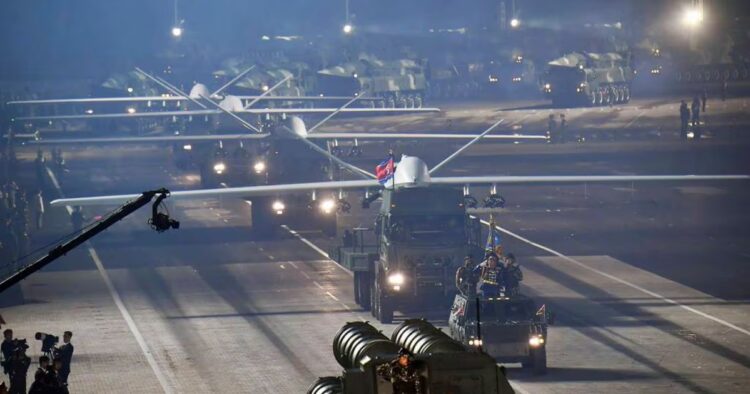South Korea announced on Thursday that it will begin deploying laser weapons systems to intercept North Korean drones. These drones have been causing security concerns in South Korea for the past few years.
The Defense Acquisition Program Administration (DAPA) of South Korea stated that it plans to deploy at least one anti-air laser weapon system, called “Block-I,” by the end of this year. More systems will be deployed in the coming years.
The “Block-I” system is designed to launch precision attacks on small drones and multi-copters. Developed by Hanwha Aerospace, each shot from the system costs just 2,000 won (about $1.50). The system targets the circuit boards and equipment in enemy drones, causing them to malfunction and crash.
An official from DAPA explained that the proximity of North Korea and the threat posed by its drones have driven South Korea to develop and deploy laser weapons quickly. Although countries like the United States and Israel have more advanced laser weapon technologies, their focus has been on higher-powered systems capable of intercepting ballistic missiles. South Korea also aims to develop such advanced laser weapons in the future.
Tests of the “Block-I” system conducted in 2022 and 2023 were successful, proving the system’s credibility. However, some experts have raised concerns about its effectiveness. Lee Illwoo from the Korea Defense Network questioned the capability of South Korea’s radar systems to detect North Korean drones effectively. He suggested that high-power microwave weapons might be more suitable for dealing with large numbers of drones simultaneously.
Jung Chang Wook, head of the Korea Defense Study Forum, believes that South Korea is about five years away from having a fully functioning laser weapon system capable of shooting down North Korean drones. Despite the current challenges, South Korea is committed to advancing its laser weapon technology.
North Korea has been flying drones across its heavily fortified border with South Korea for several years, testing South Korea’s readiness. In December 2022, South Korea accused North Korea of sending drones across the border for the first time in five years. South Korea responded with warning shots and launched fighter jets and helicopters but failed to shoot down any drones.
ALSO READ: “Samsung Electronics Faces Indefinite Strike as Main South Korean Union Takes Action”
North Korea’s Future Plans
During a political meeting in December 2023, North Korean leader Kim Jong Un vowed to introduce various types of unmanned combat equipment, including attack drones, in 2024. Foreign experts believe Kim views drones as a cost-effective way to create security concerns and internal divisions in South Korea.
The relationship between the two Koreas, divided along the world’s most heavily fortified border, has worsened in recent months. North Korea has sent trash-carrying balloons towards South Korea in response to South Korean activists floating political leaflets across the border.
South Korea’s decision to deploy laser weapons highlights the growing security threats posed by North Korean drones. While there are challenges and concerns about the effectiveness of these systems, South Korea remains determined to enhance its defense capabilities against these aerial threats.

















Comments